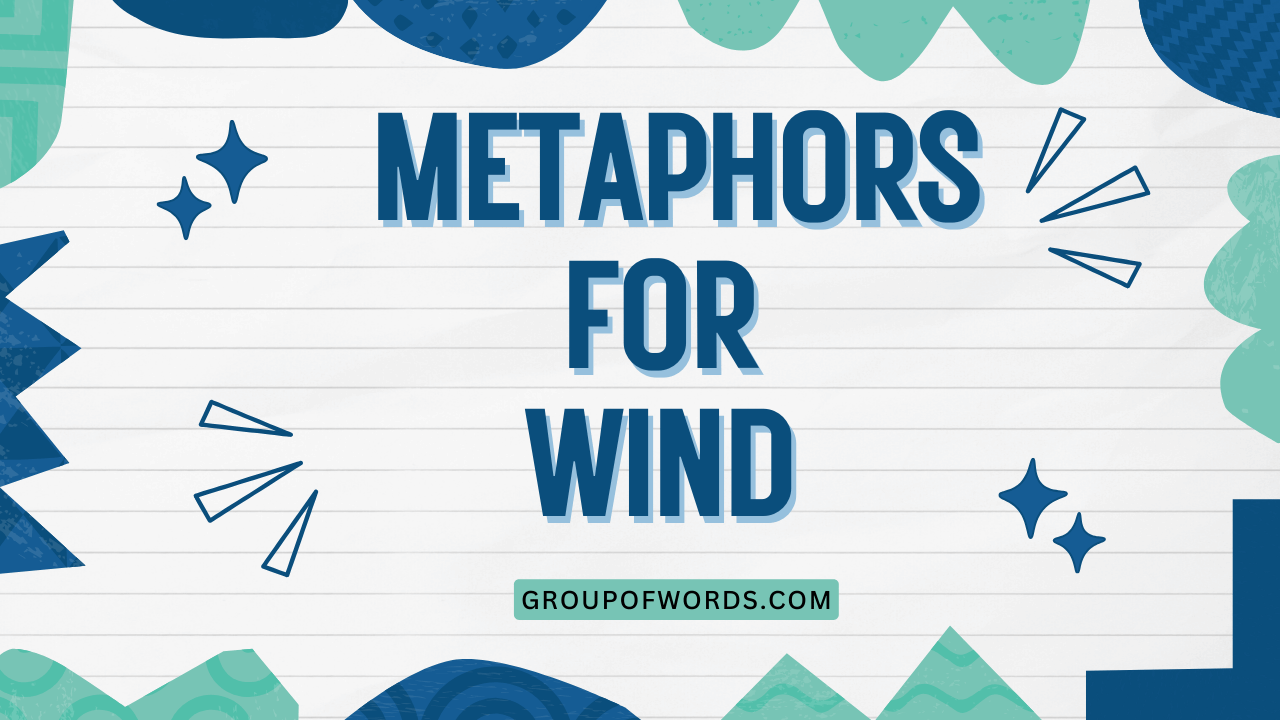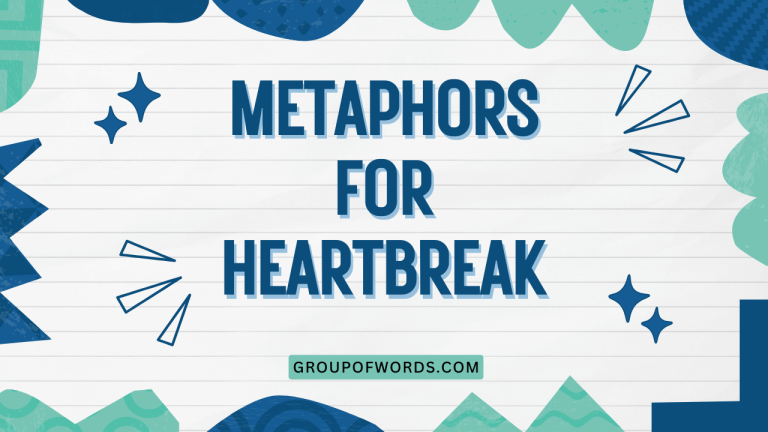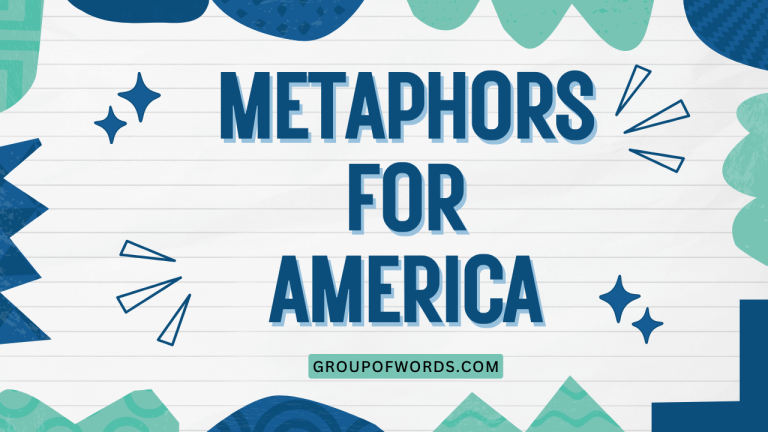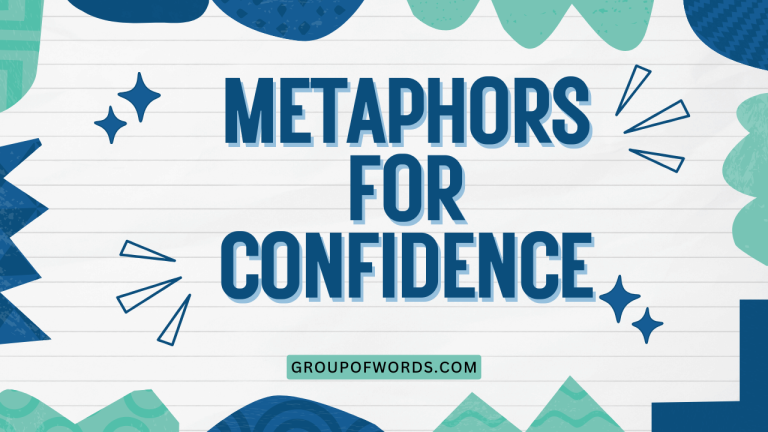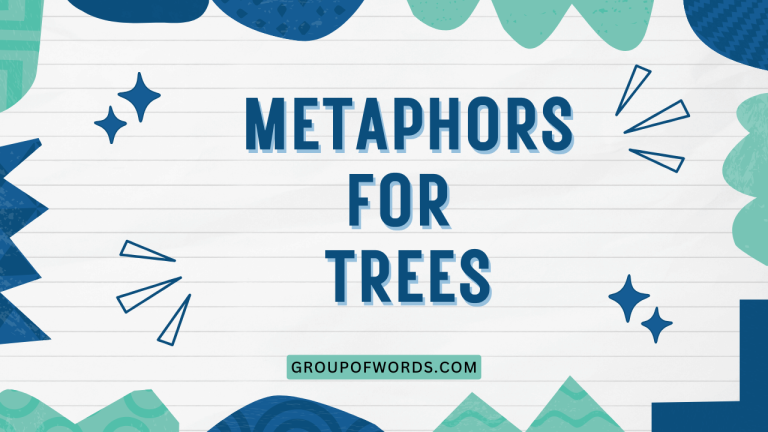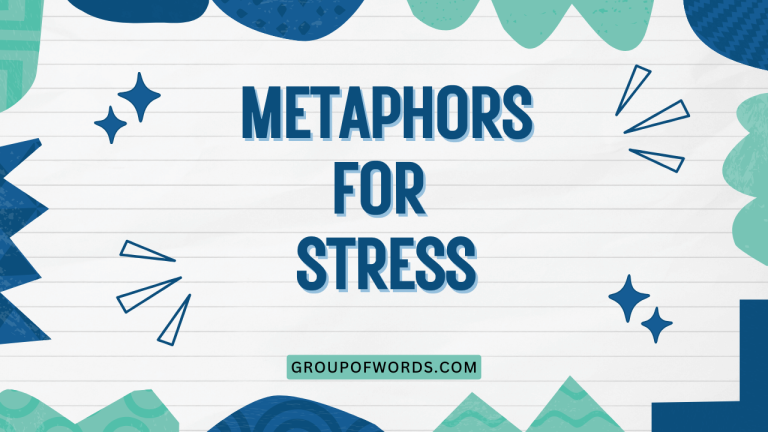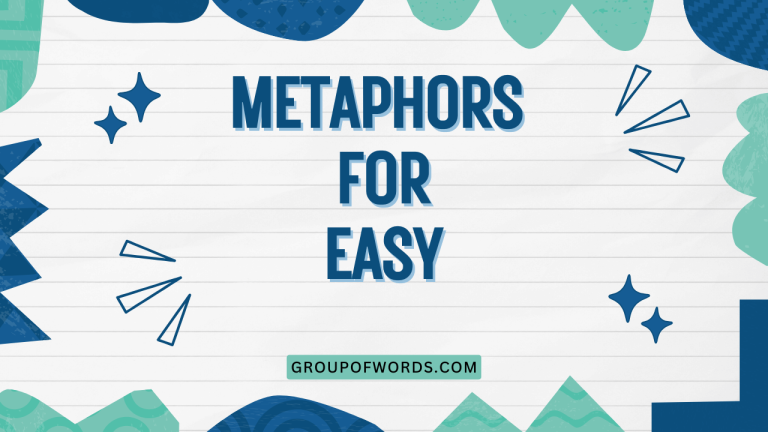Breezy Whispers: Mastering Metaphors for Wind
The wind, an invisible yet powerful force, has captivated humans for millennia. It shapes landscapes, influences weather, and carries seeds of change.
Because we can’t see the wind directly, we often rely on metaphors to describe its qualities and effects. Understanding these metaphors not only enriches our appreciation of language but also enhances our ability to communicate vividly and creatively.
This article will explore the diverse range of metaphors used to describe the wind, providing a comprehensive guide for English language learners and enthusiasts alike. Whether you’re a student, writer, or simply someone curious about the nuances of language, this exploration of wind metaphors will equip you with the tools to express yourself with greater precision and artistry.
Table of Contents
- Introduction
- Defining Metaphors for Wind
- Structural Breakdown of Wind Metaphors
- Types and Categories of Wind Metaphors
- Examples of Wind Metaphors
- Usage Rules for Wind Metaphors
- Common Mistakes with Wind Metaphors
- Practice Exercises
- Advanced Topics in Wind Metaphors
- Frequently Asked Questions
- Conclusion
Defining Metaphors for Wind
A metaphor is a figure of speech that directly compares two unrelated things, suggesting a likeness between them. Unlike similes, which use words like “like” or “as” to make comparisons explicit, metaphors imply a similarity, creating a more vivid and imaginative connection.
When we talk about the wind, which is inherently invisible, metaphors become essential tools for conveying its characteristics, intensity, and impact. These metaphors can range from simple comparisons to complex allegories, enriching our understanding and appreciation of this elemental force.
Metaphors for wind function primarily to make the abstract concrete. They allow us to perceive the wind not just as air in motion, but as something tangible, relatable, and imbued with specific qualities.
The context in which these metaphors are used significantly shapes their meaning. A metaphor describing a gentle breeze in a pastoral poem will differ drastically from one depicting a hurricane in a news report.
Thus, understanding the context is crucial for interpreting the intended effect of the metaphor.
Structural Breakdown of Wind Metaphors
Metaphors for wind typically consist of two main elements: the tenor (the wind itself) and the vehicle (the object or concept used to describe the wind). The tenor remains constant, while the vehicle changes depending on the desired effect. The relationship between the tenor and the vehicle creates the metaphorical meaning. For example, in the metaphor “the wind is a roaring lion,” the wind (tenor) is being compared to a lion (vehicle). The shared characteristic of powerful, loud forcefulness is what connects them.
The effectiveness of a wind metaphor hinges on the clarity and relevance of the connection between the tenor and the vehicle. A strong metaphor evokes a clear image or feeling, enhancing the reader’s understanding of the wind’s characteristics.
A weak or confusing metaphor, on the other hand, can obscure meaning and detract from the overall impact of the writing. Furthermore, the surrounding language and imagery play a vital role in reinforcing the metaphor.
Descriptive details that align with both the wind and the vehicle can create a more immersive and compelling experience for the reader. The structure of the sentence can also influence the effectiveness of the metaphor.
A direct statement (“The wind is a knife”) can be more impactful than a more indirect comparison (“The wind felt like a knife”).
Types and Categories of Wind Metaphors
Wind metaphors can be broadly categorized based on the types of images or concepts they invoke. Understanding these categories can help you identify and analyze metaphors more effectively, as well as create your own impactful descriptions of the wind.
Personification
Personification is a common type of wind metaphor where the wind is given human characteristics or actions. This can involve attributing emotions, intentions, or physical abilities to the wind.
Personification often makes the wind seem more alive and relatable.
For example, “The wind whispered secrets through the trees” gives the wind the human ability to whisper and implies it possesses knowledge or a hidden message. Similarly, “The wind howled in anger” attributes the emotion of anger to the wind, making it seem like a sentient force.
These metaphors can create a sense of intimacy or drama, depending on the specific human qualities assigned to the wind.
Animalistic Metaphors
Animalistic metaphors compare the wind to animals, drawing on the animals’ known characteristics to describe the wind’s behavior or intensity. This can be particularly effective for conveying the wind’s power, speed, or unpredictability.
Examples include “The wind roared like a lion,” which emphasizes the wind’s powerful sound, or “The wind slithered through the valley like a snake,” which suggests a subtle, insidious movement. The choice of animal is crucial, as it determines the specific qualities associated with the wind.
A bird metaphor might convey lightness and freedom, while a wolf metaphor could suggest ferocity and hunger.
Musical Metaphors
Musical metaphors describe the wind in terms of music, using sounds, instruments, or musical qualities to convey its character. This type of metaphor often focuses on the auditory experience of the wind, creating a sense of harmony, discord, or rhythm.
Phrases like “The wind sang a mournful song” evoke a sense of sadness and longing, while “The wind orchestrated a symphony of rustling leaves” suggests a complex and beautiful soundscape. These metaphors can also be used to describe the wind’s intensity, such as “The wind crescendoed into a deafening roar.”
Forceful Metaphors
Forceful metaphors emphasize the wind’s power and destructive potential by comparing it to strong forces of nature or man-made objects known for their strength. This can include comparisons to storms, weapons, or machines.
“The wind was a battering ram against the old house” highlights the wind’s destructive force, while “The wind was a whip lashing across the plains” emphasizes its sharp, stinging quality. These metaphors often create a sense of danger and vulnerability.
Gentle Metaphors
Gentle metaphors portray the wind as soft, delicate, and soothing. These metaphors often use imagery of feathers, whispers, or gentle touches to convey a sense of peace and tranquility.
Examples include “The wind was a gentle caress on her skin,” which suggests a light, comforting touch, or “The wind was a feather drifting through the air,” which evokes a sense of lightness and grace. These metaphors are often used to create a serene and idyllic atmosphere.
Examples of Wind Metaphors
The following tables provide a variety of examples of wind metaphors, categorized by type. Each example is designed to illustrate the different ways in which the wind can be described metaphorically, showcasing the versatility and creativity of the English language.
The table below showcases examples of Personification metaphors for wind. The examples illustrate how the wind is given human characteristics such as whispering, singing, or dancing.
| Metaphor | Explanation |
|---|---|
| The wind whispered secrets through the tall grass. | The wind is given the human ability to whisper, suggesting it carries hidden knowledge. |
| The wind sang a mournful song among the tombstones. | The wind is personified as a singer, conveying a sense of sadness and loss. |
| The wind danced through the fields, scattering wildflowers. | The wind is depicted as a dancer, suggesting a playful and energetic movement. |
| The wind sighed heavily, lamenting the end of summer. | The wind is given the human action of sighing, demonstrating the regret and sorrow. |
| The wind screamed in fury as the storm intensified. | The wind is personified as screaming, demonstrating the anger and intensity of the storm. |
| The wind gossiped among the leaves, spreading rumors. | The wind is given the act of gossiping, conveying the idea of spreading secrets or rumors. |
| The wind chuckled mischievously, ruffling her hair. | The wind is depicted as chuckling, suggesting playful mischief. |
| The wind wept tears of rain onto the parched earth. | The wind is personified as weeping, demonstrating the sadness and sorrow. |
| The wind scolded the trees for shedding their leaves early. | The wind is given the human action of scolding, expressing disappointment and disapproval. |
| The wind embraced the mountains with its icy breath. | The wind is personified as embracing, conveying a sense of coldness. |
| The wind coaxed the clouds to release their rain. | The wind is personified as coaxing, gently persuading the clouds. |
| The wind interrogated the old house, seeking its secrets. | The wind is given the human action of interrogating, seeking its secrets. |
| The wind argued with the waves, creating a tumultuous sea. | The wind is personified as arguing, showing the conflict and struggle. |
| The wind flattered the flowers, encouraging them to bloom. | The wind is personified as flattering, gently persuading the flowers. |
| The wind judged the clouds, deciding when to unleash the storm. | The wind is given the human action of judging, deciding when to unleash the storm. |
| The wind mocked the stillness of the lake, creating ripples. | The wind is personified as mocking, disturbing the calmness of the lake. |
| The wind narrated the story of the storm, echoing through the valley. | The wind is personified as narrating, echoing through the valley. |
| The wind pleaded with the sun to shine through the clouds. | The wind is personified as pleading, persuading the sun to shine. |
| The wind commanded the branches to sway according to its rhythm. | The wind is personified as commanding, dictating the branches to sway. |
| The wind advised the birds to seek shelter before the tempest. | The wind is personified as advising, warning the birds to seek shelter. |
| The wind negotiated with the leaves, deciding where they should fall. | The wind is personified as negotiating, deciding where they should fall. |
| The wind tricked the unsuspecting sailors, leading them astray. | The wind is personified as tricking, leading the sailors astray. |
| The wind comforted the weary traveler, offering a cool breeze. | The wind is personified as comforting, offering a cool breeze. |
This table presents examples of Animalistic metaphors used to describe the wind. These metaphors compare the wind to various animals to emphasize certain qualities like fierceness, stealth, or grace.
| Metaphor | Explanation |
|---|---|
| The wind roared like a lion in the savanna. | The wind’s sound is compared to a lion’s roar, emphasizing its power and ferocity. |
| The wind slithered through the valley like a snake. | The wind’s movement is compared to a snake, suggesting a subtle and insidious approach. |
| The wind howled like a wolf at the lonely moon. | The wind’s sound is compared to a wolf’s howl, conveying a sense of loneliness and wildness. |
| The wind fluttered like a hummingbird near the blossoms. | The wind’s movement is compared to a hummingbird, suggesting lightness and quickness. |
| The wind swooped down like an eagle, scattering leaves. | The wind’s movement is compared to an eagle, conveying a sense of suddenness and power. |
| The wind buzzed like a bee, flitting from flower to flower. | The wind’s movement is compared to a bee, suggesting busyness and activity. |
| The wind galloped across the plains like a wild horse. | The wind’s movement is compared to a horse, conveying speed and freedom. |
| The wind crept like a spider along the dusty floor. | The wind’s movement is compared to a spider, suggesting a subtle and insidious approach. |
| The wind soared like a falcon high above the mountains. | The wind’s movement is compared to a falcon, conveying a sense of freedom and majesty. |
| The wind danced like a butterfly in the summer meadow. | The wind’s movement is compared to a butterfly, suggesting grace and beauty. |
| The wind prowled like a panther through the darkened forest. | The wind’s movement is compared to a panther, conveying a sense of stealth and danger. |
| The wind chirped like a cricket in the quiet night. | The wind’s sound is compared to a cricket, suggesting tranquility and peace. |
| The wind charged like a rhino through the tall grass. | The wind’s movement is compared to a rhino, conveying a sense of power and force. |
| The wind snaked through the trees like a vine. | The wind’s movement is compared to a vine, suggesting a subtle approach. |
| The wind stalked like a tiger in the dense jungle. | The wind’s movement is compared to a tiger, conveying a sense of stealth and danger. |
| The wind croaked like a frog by the murky pond. | The wind’s sound is compared to a frog, suggesting a low, guttural sound. |
| The wind trotted like a donkey across the empty field. | The wind’s movement is compared to a donkey, conveying a sense of slow, steady pace. |
| The wind flapped like a penguin on the icy shore. | The wind’s movement is compared to a penguin, suggesting clumsiness and awkwardness. |
| The wind scurried like a squirrel up the old oak tree. | The wind’s movement is compared to a squirrel, conveying a sense of quickness. |
| The wind yelped like a puppy lost in the vast meadow. | The wind’s sound is compared to a puppy, conveying a sense of vulnerability and loneliness. |
| The wind trumpeted like an elephant through the dense jungle. | The wind’s sound is compared to an elephant, conveying a sense of power. |
| The wind hopped like a rabbit across the moonlit field. | The wind’s movement is compared to a rabbit, conveying a sense of quickness. |
| The wind hissed like a feral cat on the rooftops. | The wind’s sound is compared to a cat, conveying a sense of danger. |
The following table presents examples of Musical metaphors used to describe the wind. These metaphors compare the wind to music, instruments, or musical qualities, emphasizing its sound and rhythm.
| Metaphor | Explanation |
|---|---|
| The wind sang a mournful song through the bare branches. | The wind’s sound is compared to a song, evoking a sense of sadness and loss. |
| The wind orchestrated a symphony of rustling leaves. | The wind’s effect is compared to a symphony, suggesting a complex and harmonious soundscape. |
| The wind played a haunting melody on the windowpanes. | The wind’s sound is compared to a melody, creating a sense of mystery and intrigue. |
| The wind hummed a lullaby to the sleeping village. | The wind’s sound is compared to a lullaby, suggesting peace and tranquility. |
| The wind whistled a cheerful tune as it skipped through the town. | The wind’s sound is compared to a tune, conveying a sense of joy and lightheartedness. |
| The wind droned like a bagpipe on the Scottish moors. | The wind’s sound is compared to a bagpipe, creating a sense of traditional music. |
| The wind strummed the harp strings of the willow tree. | The wind’s effect is compared to a harp, suggesting a delicate and beautiful sound. |
| The wind beat a relentless drum against the old barn. | The wind’s effect is compared to a drum, creating a sense of power and force. |
| The wind composed a ballad of the sea, wild and untamed. | The wind’s effect is compared to a ballad, evoking a sense of storytelling and adventure. |
| The wind resonated with the deep bass of the ocean waves. | The wind’s sound is compared to bass, suggesting a deep and resonant sound. |
| The wind echoed with the high soprano of the mountain peaks. | The wind’s sound is compared to soprano, creating a sense of soaring and ethereal sound. |
| The wind harmonized with the chorus of the forest creatures. | The wind’s effect is compared to a harmony, suggesting a complex and beautiful soundscape. |
| The wind vibrated like the strings of a cello in the concert hall. | The wind’s sound is compared to cello, suggesting a deep and resonant sound. |
| The wind rattled like the maracas in the samba parade. | The wind’s sound is compared to maracas, creating a sense of liveliness. |
| The wind moaned like the tuba in the marching band. | The wind’s sound is compared to tuba, suggesting a low and booming sound. |
| The wind tinkled like the triangle in the orchestra. | The wind’s sound is compared to triangle, creating a sense of delicate sound. |
| The wind wailed like the saxophone in the blues club. | The wind’s sound is compared to saxophone, suggesting a soulful sound. |
| The wind buzzed like the kazoo in the children’s band. | The wind’s sound is compared to kazoo, creating a sense of playful sound. |
| The wind clanged like the cymbals in the rock concert. | The wind’s sound is compared to cymbals, creating a sense of powerful sound. |
| The wind whispered like the flute in the chamber orchestra. | The wind’s sound is compared to flute, suggesting a delicate sound. |
| The wind roared like the trombone in the jazz ensemble. | The wind’s sound is compared to trombone, creating a sense of powerful sound. |
| The wind sighed like the accordion in the Parisian cafe. | The wind’s sound is compared to accordion, suggesting a mournful sound. |
The following table presents examples of Forceful metaphors used to describe the wind. These metaphors emphasize the wind’s power and destructive potential.
| Metaphor | Explanation |
|---|---|
| The wind was a battering ram against the old house. | The wind’s force is compared to a battering ram, highlighting its destructive power. |
| The wind was a whip lashing across the plains. | The wind’s force is compared to a whip, emphasizing its sharp and stinging quality. |
| The wind was a bulldozer, clearing everything in its path. | The wind’s force is compared to a bulldozer, suggesting its overwhelming power. |
| The wind was a tidal wave, crashing over the coastal town. | The wind’s force is compared to a tidal wave, conveying a sense of destruction and inundation. |
| The wind was a tornado, twisting and tearing through the countryside. | The wind’s force is compared to a tornado, suggesting its chaotic and destructive nature. |
| The wind was a hammer, pounding against the weakened door. | The wind’s force is compared to a hammer, highlighting its relentless impact. |
| The wind was a cannon, blasting through the mountain pass. | The wind’s force is compared to a cannon, conveying a sense of explosive power. |
| The wind was a wrecking ball, demolishing the abandoned building. | The wind’s force is compared to a wrecking ball, suggesting complete destruction. |
| The wind was a flood, sweeping away everything in its wake. | The wind’s force is compared to a flood, conveying a sense of overwhelming power and destruction. |
| The wind was a wildfire, consuming the dry forest. | The wind’s force is compared to a wildfire, suggesting its rapid and destructive spread. |
| The wind was a blizzard, burying the town under a blanket of snow. | The wind’s force is compared to a blizzard, highlighting its intensity and severity. |
| The wind was an avalanche, cascading down the mountain slopes. | The wind’s force is compared to an avalanche, suggesting its overwhelming power and speed. |
| The wind was a hurricane, unleashing its fury upon the coastline. | The wind’s force is compared to a hurricane, conveying a sense of intense destruction. |
| The wind was a steamroller, flattening everything in its path. | The wind’s force is compared to a steamroller, suggesting its overwhelming power. |
| The wind was a cyclone, spinning with devastating force. | The wind’s force is compared to a cyclone, conveying a sense of intense destruction. |
| The wind was a volcano, erupting with molten fury. | The wind’s force is compared to a volcano, suggesting its sudden and destructive force. |
| The wind was a tsunami, engulfing the coastal villages. | The wind’s force is compared to a tsunami, conveying a sense of overwhelming force. |
| The wind was an earthquake, shaking the foundations of the city. | The wind’s force is compared to an earthquake, suggesting its destructive power. |
| The wind was a sandstorm, burying the desert oasis. | The wind’s force is compared to a sandstorm, conveying a sense of overwhelming power. |
| The wind was a hailstorm, pelting the earth with icy stones. | The wind’s force is compared to a hailstorm, suggesting its intensity. |
Usage Rules for Wind Metaphors
Using wind metaphors effectively requires careful consideration of several factors. The key is to ensure that the metaphor is both appropriate for the context and clear in its meaning.
Here are some important usage rules to keep in mind:
- Clarity: The metaphor should be easily understood. Avoid obscure or overly complex comparisons that might confuse the reader.
- Relevance: The vehicle (the object or concept used in the metaphor) should have a clear connection to the wind’s characteristics. Choose vehicles that accurately reflect the wind’s qualities, such as its speed, force, sound, or movement.
- Consistency: Maintain a consistent tone and imagery throughout your description. Avoid mixing metaphors that clash or create a disjointed effect.
- Originality: While common metaphors can be effective, strive for originality to make your writing more engaging and memorable. Consider unique or unexpected comparisons that can offer a fresh perspective on the wind.
- Context: The appropriateness of a metaphor depends heavily on the context. A metaphor that works well in a poem might be unsuitable for a scientific report. Consider the audience, purpose, and tone of your writing when choosing a metaphor.
Common Mistakes with Wind Metaphors
Even experienced writers can sometimes make mistakes when using wind metaphors. Here are some common errors to avoid:
- Mixed Metaphors: Combining two or more incompatible metaphors in a single sentence or passage.
- Incorrect: The wind was a roaring lion, but it also tiptoed like a mouse.
- Correct: The wind roared like a lion. (Focuses on the wind’s power.)
- Correct: The wind tiptoed like a mouse. (Focuses on the wind’s subtlety.)
- Clichéd Metaphors: Using overused or predictable metaphors that lack originality and impact.
- Clichéd: The wind was a gentle breeze.
- Improved: The wind was a soft caress on her cheek.
- Inappropriate Tone: Using metaphors that are inconsistent with the overall tone of the writing.
- Inappropriate: The hurricane was a playful kitten batting at the coastline. (Too lighthearted for a serious event.)
- Correct: The hurricane was a raging beast tearing at the coastline.
- Lack of Clarity: Using metaphors that are too abstract or obscure to be easily understood.
- Unclear: The wind was a fractal of time.
- Improved: The wind carried the scent of distant storms, a reminder of time’s passage.
- Overuse of Metaphors: Relying too heavily on metaphors, which can make writing feel cluttered and artificial.
- Overused: The wind was a knife, slicing through the air as it howled like a wolf, devouring the silence.
- Improved: The wind howled, its sharp gusts cutting through the air.
Practice Exercises
Test your understanding of wind metaphors with these practice exercises.
Exercise 1: Identifying Types of Metaphors
Identify the type of wind metaphor used in each sentence (Personification, Animalistic, Musical, Forceful, Gentle).
| Question | Answer |
|---|---|
| 1. The wind whispered secrets through the leaves. | Personification |
| 2. The wind roared like a lion across the plains. | Animalistic |
| 3. The wind sang a mournful song through the empty streets. | Musical |
| 4. The wind was a battering ram against the old door. | Forceful |
| 5. The wind was a gentle caress on her face. | Gentle |
| 6. The wind danced through the garden like a playful sprite. | Personification |
| 7. The wind slithered through the grass like a serpent. | Animalistic |
| 8. The wind hummed a lullaby to the sleeping world. | Musical |
| 9. The wind was a wrecking ball against the dilapidated building. | Forceful |
| 10. The wind was a feather drifting on the summer air. | Gentle |
Exercise 2: Completing Metaphors
Complete the following wind metaphors with an appropriate vehicle.
| Question | Answer |
|---|---|
| 1. The wind was as relentless as a __________. | machine |
| 2. The wind moved like a ________ through the tall grass. | ghost |
| 3. The wind’s sound was like a ________ in the distance. | cry |
| 4. The wind tore through the town like a ________. | monster |
| 5. The wind was as soft as a ________. | cloud |
| 6. The wind was a ________, whispering tales of old. | storyteller |
| 7. The wind crept through the alleyways like a ________. | cat |
| 8. The wind played a tune like a lonely ________. | violin |
| 9. The wind was a ________, demolishing the sandcastles. | giant |
| 10. The wind was as soothing as a ________. | balm |
Exercise 3: Creating Your Own Metaphors
Create your own wind metaphors for the following scenarios.
| Scenario | Your Metaphor |
|---|---|
| 1. A gentle breeze on a summer evening. | The wind was a cool drink on a hot day. |
| 2. A strong wind during a thunderstorm. | The wind was a raging beast, clawing at the sky. |
| 3. A light wind rustling through autumn leaves. | The wind was a painter, brushing colors across the trees. |
| 4. A cold wind blowing in winter. | The wind was an icy blade, cutting through exposed skin. |
| 5. A warm wind carrying the scent of flowers. | The wind was a messenger, delivering the perfume of spring. |
| 6. A playful wind ruffling hair at the beach. | The wind was a mischievous child, tugging at strands. |
| 7. A persistent wind pushing against a sailboat. | The wind was a helpful companion, guiding the boat. |
| 8. A howling wind during a blizzard. | The wind was a mournful spirit, lamenting the cold. |
| 9. A subtle wind carrying seeds across a field. | The wind was a sower, scattering life for the future. |
| 10. A wind that suddenly stops, leaving stillness. | The wind was a paused song, leaving silence behind. |
Advanced Topics in Wind Metaphors
For advanced learners, exploring the use of wind metaphors in literature and poetry can provide deeper insights into their artistic and symbolic significance. Studying how different authors and poets employ wind metaphors to convey themes of change, freedom, destruction, or renewal can enrich your understanding of both language and literature.
Additionally, analyzing the cultural and historical contexts in which these metaphors are used can reveal deeper layers of meaning and interpretation. For example, wind metaphors in ancient Greek literature often reflect the influence of mythology and the belief in wind gods, while wind metaphors in Romantic poetry often express a sense of awe and connection with nature.
Another advanced topic is the creation of extended metaphors involving the wind. An extended metaphor is a metaphor that is developed over several lines or paragraphs, allowing for a more complex and nuanced exploration of the relationship between the tenor and the vehicle.
Creating effective extended metaphors requires careful planning and attention to detail, ensuring that the comparison remains consistent and coherent throughout the passage. This can be a challenging but rewarding exercise for advanced learners seeking to enhance their creative writing skills.
Consider reading examples of extended wind metaphors in famous literary works and then attempting to create your own.
Frequently Asked Questions
Here are some frequently asked questions about wind metaphors.
- What is the difference between a metaphor and a simile?
A metaphor directly compares two unlike things without using “like” or “as,” while a simile uses “like” or “as” to make the comparison explicit. For example, “The wind is a roaring lion” is a metaphor, while “The wind is like a roaring lion” is a simile.
- Why are metaphors important in describing the wind?
Metaphors help us understand and visualize the wind, which is an invisible force. They allow us to convey its qualities, intensity, and impact in a more vivid and imaginative way.
- How can I create effective wind metaphors?
Choose vehicles that have a clear and relevant connection to the wind’s characteristics. Consider the
wind’s speed, sound, force, and movement, and select vehicles that accurately reflect these qualities. Experiment with different types of metaphors, such as personification, animalistic comparisons, and musical analogies, to find the most impactful and creative descriptions.
Conclusion
Metaphors for wind offer a rich and imaginative way to describe this invisible yet powerful force. By understanding the different types of wind metaphors, following usage rules, and avoiding common mistakes, you can enhance your writing and communication skills.
Whether you’re a student, writer, or simply someone who appreciates the beauty of language, mastering wind metaphors will allow you to express yourself with greater precision and creativity. Continue to practice and explore the endless possibilities of metaphorical language, and you’ll discover new and exciting ways to bring the wind to life through your words.
